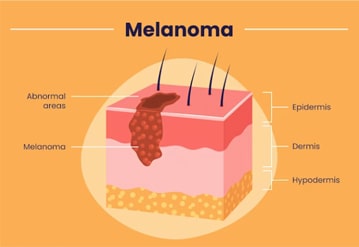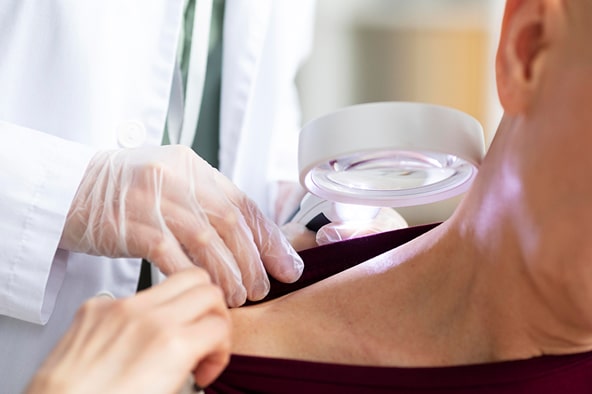Melanoma Removal Surgery
Experience Counts
What is a Melanoma?
Melanoma is the most dangerous type of skin cancer. It is somewhat rare but accounts for the majority of skin cancer-related deaths and if not caught and treated early it can spread to other parts of the body. Melanoma is associated with prolonged sun exposure and develops in the cells that produce melanin- the pigment that gives skin it’s color. Melanomas can develop anywhere on the skin, but often start on the chest or back in men and legs in women. The neck and face are also common sites.

How is Melonoma treated?
Melanoma must be treated surgically to remove the cancerous tissues and sometimes surrounding tissues if the melanoma has spread.
Wide Excision
Wide excision surgery is performed after melanoma is diagnosed via skin biopsy. Local anesthesia is injected and the site area of melonoma is cut out along with some of the surrounding normal skin called a margin. The incision is stitched together and the removed sample is sent to a lab.
Lymph Node Dissection
With this type of surgery lymph nodes near the melanoma are removed. After the inital melanoma diagnosis, the nearby lymph nodes are examined and if found to be abnormally large or hard they are surgically removed.
Melanoma Surgery Aftercare
Recovery varies from patient to patient and depending upon the location and size of the melanoma. After surgery you’ll most likely have stitches until the wound heals. You will have a scar but this will usually become less noticeable with time. Most wounds take 1 to 3 weeks to heal. If a large area of skin is removed, the surgeon may repair the wound using a skin graft. In that case, healing may take longer.


